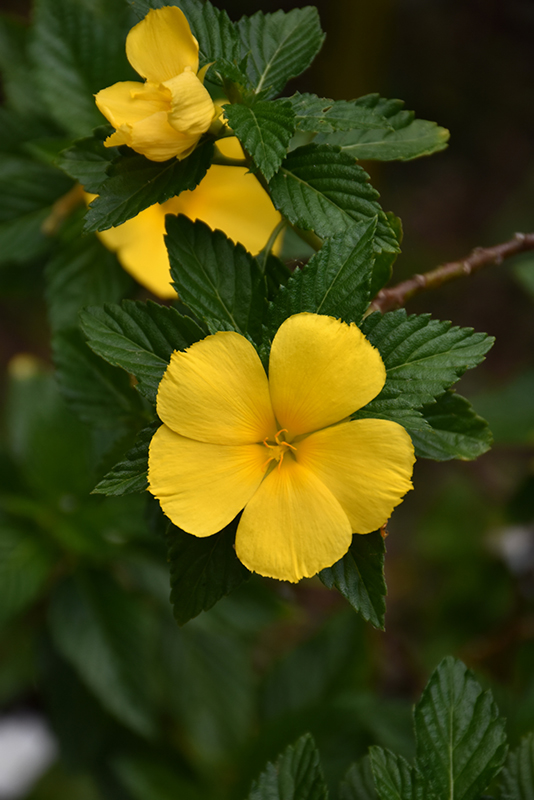Plant Finder
Height: 3 feet
Spread: 3 feet
Sunlight:
![]()
Hardiness Zone: 8b
Other Names: Elm-leaved Turnera, Sage Rose, Yellow Buttercup
Description:
Bright yellow flowers bloom over lovely dark green to gray-green foliage; the flowers last a day, but are borne in profusion all summer, creating a superb show; eventually produces an open airy habit; great for the garden or containers
Ornamental Features
Yellow Alder features showy yellow cup-shaped flowers at the ends of the branches from mid spring to mid fall. It has attractive dark green foliage with grayish green veins. The glossy oval leaves are highly ornamental and remain dark green throughout the winter.
Landscape Attributes
Yellow Alder is an open multi-stemmed evergreen shrub with an upright spreading habit of growth. Its average texture blends into the landscape, but can be balanced by one or two finer or coarser trees or shrubs for an effective composition.
This shrub will require occasional maintenance and upkeep, and is best cleaned up in early spring before it resumes active growth for the season. It is a good choice for attracting bees and butterflies to your yard. Gardeners should be aware of the following characteristic(s) that may warrant special consideration;
- Insects
Yellow Alder is recommended for the following landscape applications;
- Mass Planting
- General Garden Use
- Container Planting
Planting & Growing
Yellow Alder will grow to be about 3 feet tall at maturity, with a spread of 3 feet. It has a low canopy. It grows at a fast rate, and under ideal conditions can be expected to live for approximately 20 years.
This shrub should only be grown in full sunlight. It does best in average to evenly moist conditions, but will not tolerate standing water. It is not particular as to soil pH, but grows best in rich soils. It is somewhat tolerant of urban pollution. This species is not originally from North America. It can be propagated by division.
Yellow Alder makes a fine choice for the outdoor landscape, but it is also well-suited for use in outdoor pots and containers. With its upright habit of growth, it is best suited for use as a 'thriller' in the 'spiller-thriller-filler' container combination; plant it near the center of the pot, surrounded by smaller plants and those that spill over the edges. It is even sizeable enough that it can be grown alone in a suitable container. Note that when grown in a container, it may not perform exactly as indicated on the tag - this is to be expected. Also note that when growing plants in outdoor containers and baskets, they may require more frequent waterings than they would in the yard or garden.




